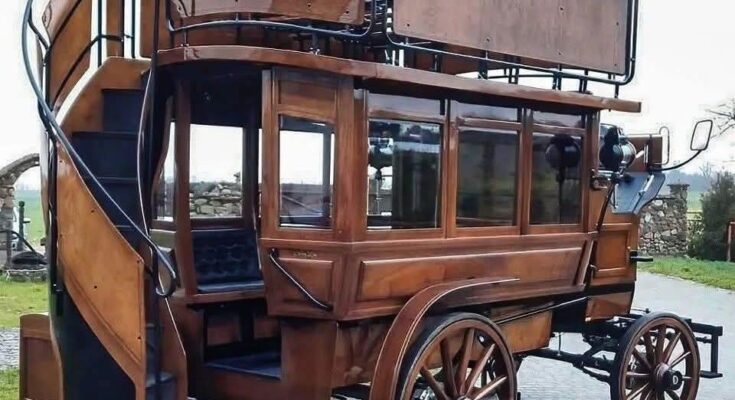In the late 19th century, horse-drawn buses, or omnibuses, were a cornerstone of urban transportation, particularly in rapidly expanding cities like London. These vehicles not only facilitated daily commutes but also played a pivotal role in shaping the social and economic landscapes of the era.

Origins and Evolution
The concept of the omnibus originated in France in the early 19th century, with the term “omnibus” meaning “for all” in Latin. In 1829, George Shillibeer introduced the first horse-drawn omnibus service in London, operating between Paddington and the City of London. This innovation provided a more affordable and efficient alternative to the traditional hackney carriages, which were often prohibitively expensive for the working class.

By the 1850s, the London General Omnibus Company (LGOC) was established, consolidating various smaller operators and standardizing services across the city. This consolidation led to the proliferation of horse-drawn buses, with London alone boasting over 2,000 such vehicles by the 1890s.
Design and Operation

Horse-drawn buses were typically large, enclosed vehicles capable of carrying 20 to 30 passengers. They featured two main types of seating:
- Lower Deck: Enclosed and often furnished with wooden benches, this area provided protection from the elements.
- Upper Deck: Accessible via a ladder, the upper deck was open-air, offering passengers panoramic views of the city. Seating arrangements varied, with early designs featuring “knifeboard” seating, where passengers sat back to back facing outward. By the 1880s, this was gradually replaced by “garden-style” seating, featuring forward-facing benches.
The buses were drawn by teams of horses, with the number depending on the vehicle’s size and the terrain. Operators typically employed a stable of horses, along with grooms, blacksmiths, and other staff to maintain the fleet.
Impact on Urban Life

The advent of horse-drawn buses revolutionized urban mobility. They provided a reliable means of transportation for the working class, enabling individuals to live farther from their workplaces and contributing to the expansion of cities. This increased mobility also facilitated the growth of suburbs and the development of new commercial areas.
Socially, the omnibuses became a focal point for community interaction. The shared nature of the service meant that people from various walks of life traveled together, fostering a sense of communal identity. The upper deck, in particular, became a social space where passengers could converse and observe the city’s life.
Transition to Motorized Transport

Despite their popularity, horse-drawn buses were eventually supplanted by motorized vehicles. The introduction of electric trams in the 1880s and early 1900s offered faster and more efficient alternatives. In London, the LGOC began experimenting with motorized buses in the late 1890s, and by 1902, they had introduced the first motorized buses into their fleet.
The transition was gradual, with horse-drawn buses continuing to operate alongside motorized ones for several years. However, by the early 20th century, the era of the horse-drawn omnibus had effectively ended, marking a significant shift in urban transportation.
Legacy

Today, horse-drawn buses are preserved in museums and historical reenactments, serving as reminders of the evolution of public transportation. They highlight the ingenuity of 19th-century urban planning and the significant strides made in the development of mass transit systems.
In summary, the horse-drawn bus of the 1890s was more than just a mode of transportation; it was a catalyst for urban development, social interaction, and economic growth. Its legacy continues to be felt in the modern public transit systems that trace their origins back to this pivotal period in history.
For a visual glimpse into the era of horse-drawn buses, you might find the following video insightful:





